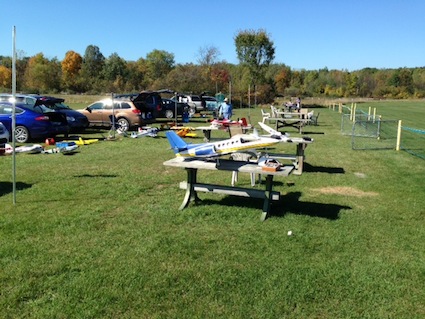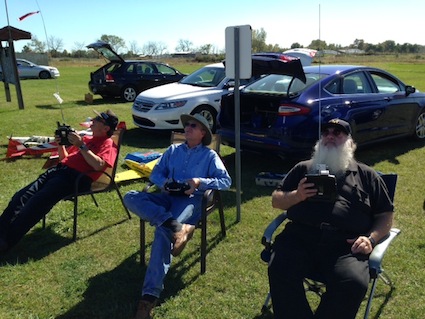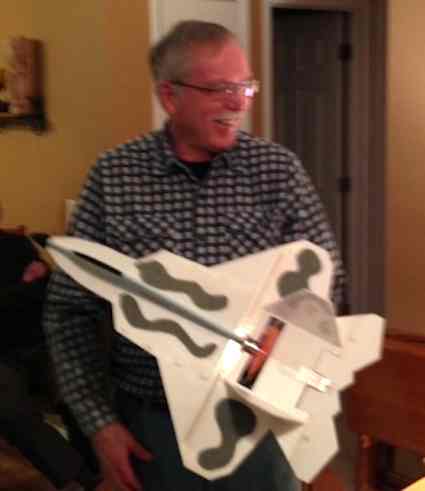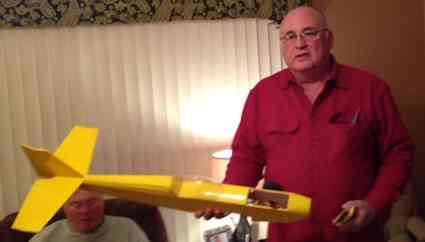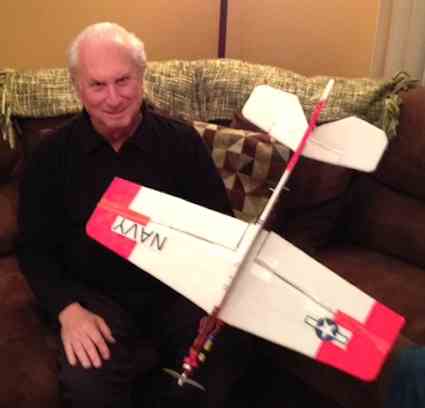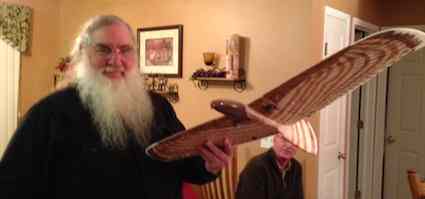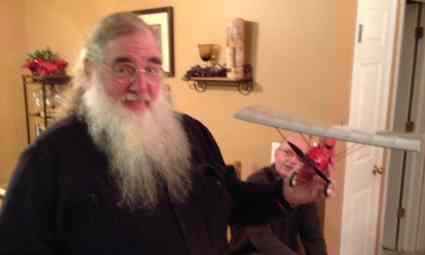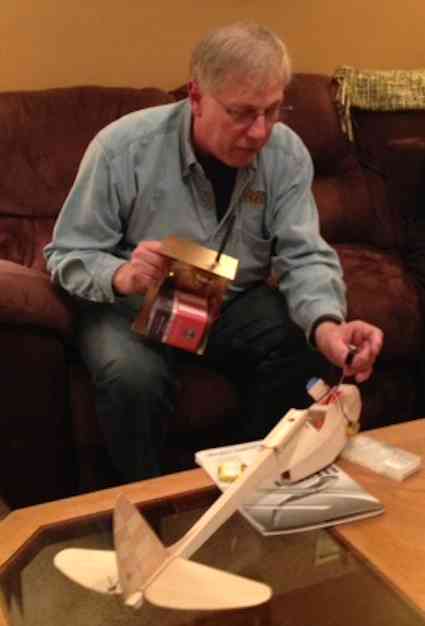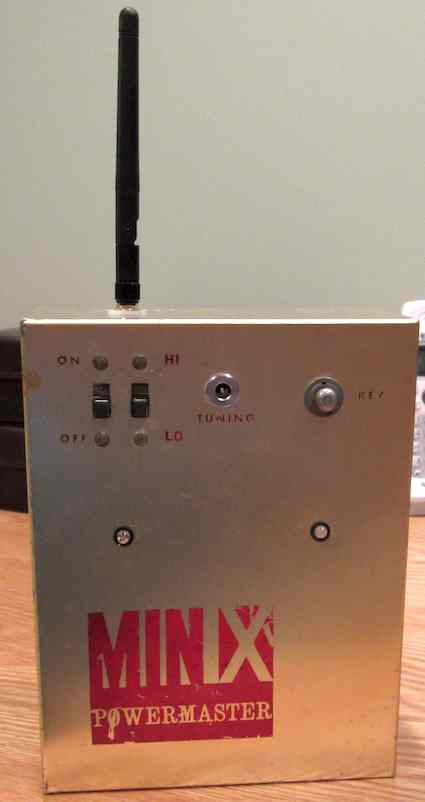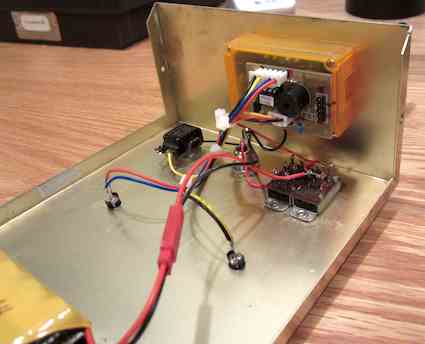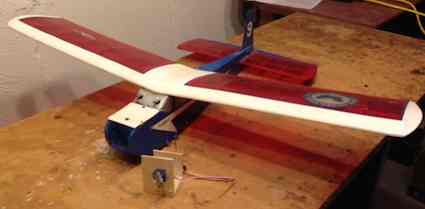 |
Flying High With Electric Power!
The Ampeer ON-LINE!
Fly the Future - Fly Electric! |
|---|
Site Table of Contents
| President: | Vice-President: | Secretary-Treasurer: |
| Ken Myers | Richard Utkan | Rick Sawicki |
| 1911 Bradshaw Ct. | 240 Cabinet | 5089 Ledgewood Ct. W. |
| Commerce Twp., MI 48390 | Milford, MI 48381 | Commerce Twp., MI 48382 |
| (248) 669-8124 | (248) 685-1705 | (248) 685-7056 |
 | ||
| Board of Directors: | Board of Directors: | Ampeer Editor |
| David Stacer | Arthur Deane | Ken Myers |
| 16575 Brookland Blvd. | 21690 Bedford Dr. | 1911 Bradshaw Ct. |
| Northville, MI 48167 | Northville, MI 48167 | Commerce Twp., MI 48390 |
| (248)924-2324 | (248)348-2058 | (248) 669-8124 |
| Mailed Ampeer printed subscriptions are no longer available.
The Ampeer is FREE on-line in Acrobat .pdf format and HTML with active links! | ||
| The Next Meeting:
Date: Thursday, Feb. 13 Time: 7:30 p.m.
Place: Ken Myers' house | ||
| Sanyo Eneloop LSD NiMH Cells are Now Panasonic, Plenny Bates shares some updated information on these cells. | Maxford Antonov An-2, Sig 1/6-scale Cub, Maxford Gee Bee E, and Some Thoughts on the Hobby Gary Gullikson shares information and ideas about these planes. |
| Willie's Escapade Willie McMath shares information on his e-powered versioin. | Ryan NYP - Spirit of St Louis Owen Morgan shares the details of his version. |
| New Hobby Shop in Ypsilanti Joe Hass informs us about a new Nankin Hobby. | More Thoughts on Motor Sizing Tom Cimato shares more thoughts on motor sizing. |
| The October 2013 EFO Flying Meeting Photos from the October 2013 EFO Flying Meeting. | Remembering KRC David Segal shares some memories from this iconic e-meet. |
| Walt Thyng's Big Cub Walt Thyng shares the details of 99" Cub. | More on Selecting Servos David Hipperson shares his thoughts on selecting servos. David Surry also shares his thoughts on this topic. |
| The December EFO Meeting The guys share a 'ton' of interesting stuff! |
http://us.sanyo.com/eneloop From Plenny Bates, via email There was an article by Keith Shaw in the January 2014 Ampeer about these very useful, low self-discharge (LSD) cells. I received the following from Plenny Bates. "Panasonic now seems to own Sanyo. And there seems to be a bunch of ╩different Eneloop cells. To know the differences you need a program.
From Gary Gullikson via email AKA E-Challenged on RC Groups Garden Grove, CA Enjoyed review/build writeup of Maxford Antonov (In the September 2013 Ampeer. KM). Your assembler's extensive notes seemed almost like a balsa kit build thread. Why is it that bipes all want to go nose up after takeoff and that the recommended CG setting╩is usually wrong for your model? I suppose the short noses on most scale radial engined models make them pitch sensitive, which╩makes╩getting the proper CG for your model set properly even more tricky. I always like to maiden slightly nose-heavy for safety. I am still finishing my Sig 1/6 J-3 project with the end finally in sight. My next project is the Maxford Gee Bee E (ARF). I picked mine up locally from Maxford warehouse. There were no damaged or missing parts. I removed covering material from the rear fuselage pushrod exit holes and rubbed pushrods with WD-40, they slide nicely. I bought four Hitec HS-82 metal geared servos. Why they recommend HS-55's is beyond me. I bought two 4S╩4500 mAh 30C packs from local Hobby People for $49 apiece. I'm using a Cobra C1420/16 from Innov8tive Designs, as recommended by Lucien Miller, and a matching 60 amp ESC with switch-mode BEC. I plan to use 15x8 APC props like Greg Gimlick used. I may remove the 1/4" black striping and replace with 1/8" for a better scale-like appearance. I e-mailed Maxford and suggested that they add a 1/6 scale Ercoupe to their line. They thanked me. I hope they do it. In my opinion, I think that the ARF threads (On RC Groups KM) have benefitted beginners in scale models greatly, mostly by urging them to learn and apply proper new model setup and╩essential ╩tail-dragger flying techniques. Hopefully some will develop into scale model builders too and enjoy what that niche has to offer. The number of long running ARF review, assembly, and "tweaking" threads on RCG Scale Electric Planes forum are causing some anti-ARF balsa-only kit and scratch builders to want separate ARF's forums. I warned about this situation two years ago, but think it's impractical to re-arrange and add even more forums now. The same situation has developed in the scale EDF forums. Interesting that threads are about 50% balsa/etc builds and 50% ARF review/assembly/tweaking threads. Keep up the good work. Gary
Hello Ken, My latest electric is an ARF. I did not buy it, I won it at our Club event. It is powered by a Turnigy NTM-42-38-750Kv, 4S Turnigy Nano-Tech Li-Po, and an APC 12x6E prop. The power pulls 38 amps through this systems producing 558 watts in. Ready to fly it weighs 5 lb. It flew OK. Willie McMath 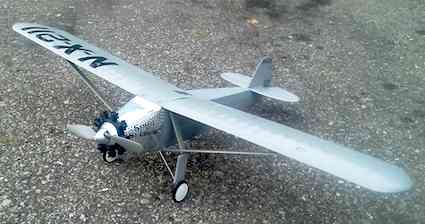
Ryan NYP - Spirit of St Louis
Owen and I had previously exchanged emails regarding powering this plane. KM Hi, Just to let you know, I maidened the Ryan NYP - Spirit of St Louis on Tuesday and then flew her again yesterday. What a sweet plane! She flies like a RET trainer with no vices. She's quite a bit faster than my Tiger Moth and maybe faster than a pure trainer would be, but that is in keeping with the original. There's no way Lindbergh was able to fly slow carrying all that fuel. She looked great in the air yesterday with the autumn sun reflecting off that shiny nose cowl. Thanks for your suggestions for motor/ESC and servos. I made a little box out of Dollar Tree foam board for the motor and that works fine. Seeing as I had to add lead to the nose, I could probably have built up something a bit heavier out of plywood. AUW is 14.5 oz. / 411g with 0.5 oz. / 14g of lead in the nose which is 2.3 oz. / 59g below her designed weight. I'm getting about 10 minutes with the same Zippy Compact 2S 850mAh batteries I use for the Tiger Moth and she could easily carry more battery if I wanted to. She flies comfortably at 2/3 throttle. At half throttle she feels mushy, but no tip stalling or loss of control. I haven't been able to land her without nose-overs though. On grass, she noses over immediately, but on sand (baseball diamond), she'll roll for about 10 feet and then nose over when going too slow for the elevator to be effective. She'd probably be fine on pavement if I can find any. I am delighted that she didn't inherit any of the poor handling of the original. There are those that say she was deliberately designed to be difficult to fly so Lindbergh would stay awake on the Atlantic crossing. Mine has dihedral, washout and under-cambered wings for which I'm very grateful. I'm sure a true scale replica of the Ryan-NYP will look nice, but she'll fly like a typewriter. I'm using a 6 channel 3.2g DSM2 micro receiver from Lemon RX and everything works perfectly. These are full range receivers and are a great deal at less than $30 shipped for 5 receivers. The only surprise is that I have to rebind when I switch between the Parkzone AS3X Mustang and the Ryan. I'm using a FlySky FS-TH9X radio running the er9x firmware with a Orange RX DSM2 transmitter module. The Tiger Moth will be converted to a Lemon RX receiver today or tomorrow, but with 20+ mph winds, I don't think there'll be any flying today. I'm also putting a Lemon RX in my OSG-X glider, so I'll get a test at good range too if we ever get some thermal type weather again. You might want to try out the Lemon RX receivers and mention them in your newsletter. They also have an 8 channel receiver and will be bringing out a gyro stabilized receiver (similar to AS3X). Owen From Joe Hass via email from Skymasters RC Club Nankin Hobby Ypsilanti
From Tom Cimato via email Tom is Mr. MaxCim Motors and a pioneer for using brushless motors in our aircraft. KM Hi Ken, I wanted to share some thoughts regarding sizing motors. The continuous capacity of an electric motor has been shown to be related to weight. While this is true, it's really because it's related to the copper content. Which leads to the fact that the capacity is related to the motors ability to dissipate the power generated in the windings I^2*R. Once you get this value for each motor you'll find that this is relatively constant for all winds of the subject motor because as the resistance increases with increasing turns, the current decreases according to the limit of dissipation I^2*R. The way we compare similar motors in industry is to evaluate the Motor Constant Km. Km is expressed in Torque per sqrt of watts. (winding resistance) Kt is derived from the rpm/volt = Kb. 1/Kb = Ke volts/rpm In metric units 1 Nm/A = 1 volt/rad/sec. Km should increase with motor size/weight. If you setup your spreadsheet to calculate Km you'll see how poorly some motors of the same size compare, but you already know that from spending a lot of time measuring. This technique should be much faster. Let me know if this is helpful and if there are any questions. Enjoy,
Thanks so much Tom. This should prove to be very helpful! KM It is always nice to look back in the middle of winter at the great flying days we had this past fall. The photos show a beautiful day and the guys enjoying some of the high pressure flying that we do. 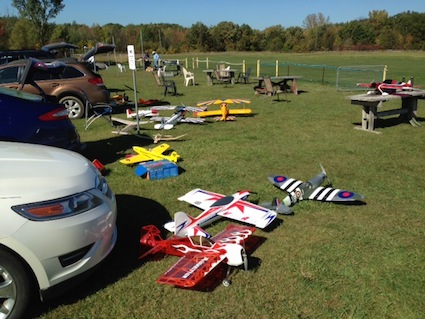
A Beautiful Fall day with planes on the flight line.
Some of the high pressure flying we subject ourselves to. Right Rick Sawicki, Denny Sumner and Keith Shaw? From David Segal via email Ken, What a great issue. (August 2013 Ampeer. KM) Seeing Keith Shaw's planes brought back memories of the Keystone RC Club's E-Fly in the 1990's held in Southeastern Pennsylvania. When Keith brought out King Crimson we stopped all other flying and just stood there in wonder. It was the most thrilling model in flight that I have ever seen. And I was happy to see that the Spitfire is still available for duty. Your current photos emphasize a statement that Keith made in a magazine back then about one of the advantages of electric-powered models. He said that if your plane can fly a given routine in a given amount of time today it will still be able to perform that way five years from now. Of course, this was due to the lack of airframe deterioration that can be caused by engine vibration and fuel soaking into the airframe of piston-powered planes. Your Antonov Colt looks great. It reminds me of an odd experience one Sunday morning at the KRC field. I heard a deep engine sound coming toward us and saw a big biplane appearing over the tree line. I ran to get my little binoculars from my car (good for birding as well as for plane spotting) and looked at it. I was amazed at the huge bulk of the fuselage and, for a moment, could think only of a 1930's biplane flying boat! But as it passed by the unmistakable shape of the Antonov could be seen. By the way, did you ever see the 1985 TV mini-series, "Mussolini: The Untold Story", which starred George C. Scott? When he reviewed planes at an airbase they were Colts in camouflage paint with Fascist insignia. Regards,
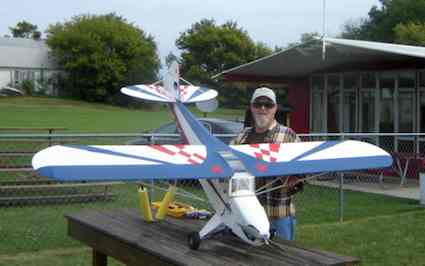
Walt Thyng's Big Cub
Been a while since I've sent anything for the Ampeer. Here's my "Rogalmodel" (Austrian) clipped wing Piper Cub. It is a SWTHO (stand way the hell off) sport scale bird. It has been kicking around our club for at least 30 years. The previous owner gave me a very good deal (free) if I promised to build and fly it. The plans looked like an Ikea instruction booklet: dotted lines from a part to it's location. EVERY piece had a number, even tiny triangle braces! It was WAY overbuilt and I ended up taking about two pounds out of the basic kit. The airfoil is a non-scale Hanno Prettner design (does that take you back?). Here are the specs: Wingspan 99 in. (works out to 28% scale), Ready to fly weight with batteries 17 lb.; motor Turnigy SK3 6364, ESC: Hobbywing 80-amp HV; power pack Gens Ace 5000 20C 10S Li-Po; prop APC 20x8E. Max amp draw 77 (1800+ watts). Covering is Solartex on Solartex. Color scheme is my take on a full scale CW Cub. Typical flight time 10 minutes with 2 minutes of reserve. This is now one of the favorite planes in my hangar. It handles like a Cub, but the Prettner airfoil makes it "livelier". I usually fly at 1/2 throttle. Stalls are a non-event. Loops from level flight are a thing of beauty; rolls are surprisingly axial, spins are tight and fast with instant recovery; inverted flight requires considerable down elevator, but is smooth and stable. Control is via my Futaba 8J with a mix of servos. The maiden flight revealed a slightly tail heavy situation and the need for coupled rudder and aileron. Slow flight is amazing and makes landings (both wheel and three point) very easy. On take off the tail comes up almost instantly and she's in the air in 30 feet (from asphalt). A recent trip into the corn field due to a forgotten timer show that the lightening I did in building did not weaken the airframe, as the only damage was a loosened stab due to an unnoticed poor glue joint. Hope all is well with you and yours.
More on Selecting Servos
Dear Ken, Thanks for the Ampeer. Like it says, I too don't know Jack about servos but I'll amend that by╩adding the word technically. I think that over the years of flying I have developed a feel for what I should be using both in the aircraft and the type of flying. I'm not sure why the Chinese have chosen to put 9g "micro" servos into so many ARF aircraft other than based on availability and price. Let us be practical in accepting that if one can purchase a servo for as little as $2.00 from Hobby City (as an example) then the manufacture obviously must run at less that fifty cents per unit. I clearly recognise that the quality and performance between╩servos can vary greatly but commonsense from the user should also be applied. I tend to be an anologue user rather than digital but if you wish to regard it as such it is down to my dinosaur attitude. Because it has been convenient I have chosen to use Hitec or JR as my default units. They are readily available in Australia and at reasonable prices. In particular and in smallish to medium models the JR 375, Hitec HS 65 and 81 have proved flawless for me over several years. I have dabbled with some servos such as those called Corona and (in the same size as the HS55) those under the HXT label. I was very wary but those in use have given good service. As the owner of several Parkzone aircraft I can say that whatever the source of their servos these have been more than adequate for the use. Where I do get concerned is the use of unknown quality 9g size servos being fitted into 1400mm span foamies operating on 4S and flying at a relatively heavy AUW. It is obvious that when models such as WWII fighters are put into a power dive a high load must be put on to the elevators particularly during a ham handed pull out. Even if we assume that the mechanics and electronics of the servo are fine there has been a tendency to fit much lighter servo arms (maybe I should say more fragile) and in turn thinner push rods are fitted. It should by contrast be noted in the differences of the servo arms used on those JR 375s and the HS 65s where the arms are suitably robust. As an example I have used Hitec HS 65s in my Sebart Shark, Stev and Sukhoi 29S 30 all of which have worked without fail. In the case of the Sukhoi and Shark over more than four years. Anyone familiar with the Sukhoi will be aware that it carries big surfaces but this and the other two are best suited to slow speeds. I guess what I am saying is that modellers should spend a little time learning to look at what tool should be used for what task. Let us be really sensible in that adding a total of 20g total to four servos is unlikely to affect most electric models and the cost of a cheap, fragile, unknown servo might be pretty expensive if it costs an airframe. Regards as always
London, Ont., Canada My son Patrick, in Boston, sent me some of the discussion on servo loads. Since we have discussed this in the past, he suggested I send you the following, which I have elaborated a bit to try and make it as clear as possible. When I first started back into RC, servo loads troubled me too. It seemed to me that relating them just to A/C (aircraft KM) weight did not make sense, and I hated the idea of just always being super conservative. Having a bit of aerodynamics in my background, I realized that you could make a rough estimate of any servo load from first principles, if you made a few assumptions and could ball park the model speed. In its simplest form, I came up with a rough estimate of the aerodynamic load as: Load = 1.5 x A x c x (V/100)**2 inch-ounces Where A is the control surface area in square inches
For example, I was estimating the elevator loads for a 5' span old timer cabin model weighing about 40 ounces. This model probably flies at about 20 to 25 mph, but I allowed 50 mph in case it was in a dive, when an operational elevator might be particularly important! The factor (V/100)**2 is just 1/4. (50/100^2=1/4 KM) The elevator was only about 12 square inches and had a one inch chord. The result is just 4.5 ounce-inches. Not a lot! Now this doesn't make any allowance for frictional loads, which depend on how carefully you set up your push rod system. Without the servo connected, imagine adding an 8 ounce weight in place of the servo (vertically, of course) and one would hope this would be more than enough to overcome friction. With a control horn length of 1/2", this means 4 ounce-inches should be enough for friction. You can make adjustments to this as you see fit according to the model, or actually do an experiment. Add this on to whatever you get for the aerodynamic loads and you have a reasonable first estimate for your servo load. In this case, 8.5 ounce-inches, so pick a servo that gives you some factor of safety over this and you should be good. I usually use about 2 (see below). Now, for the assumptions involved, so that you can judge whether you need to further adjust the results. The fundamental problem is that the servo applies a force to the push rod (or vice versa depending on how you look at it) a certain distance from the servo's centre of rotation (the servo arm length) which multiplied together gives you the servo torque. Neglecting the friction that we have dealt with separately, that torque is balanced by the torque created by the force applied by the control rod to the control surface horn at a certain distance from the control surface hinge line. Finally that same hinge line torque is created by aerodynamic forces acting on the control surface that act through some centre of pressure that exists some distance from the hinge line. To keep things simple, I have assumed that the centre of pressure is at half the control surface chord or width. This is conservative, as it is likely closer to the hinge line than that. I have assumed that the aerodynamic load is just the dynamic pressure of the wind due to the A/C motion (1/2 x air density x velocity squared). This essentially assumes the average pressure coefficient across the control surface to be unity, which is reasonable. Finally and most important, I have assumed that the servo arm length and the control surface horn length are the same, just for simplicity. Clearly, if they are not nearly the same, we should introduce their ratio as a correction, such that if the servo arm is longer, the required torque should be increased by that ratio (the control rod forces put more torque on the servo, so more torque is required). A factor of safety of two, should be fine for most applications. The formula also contains conversion factors to allow for the speed to be in mph and the model dimensions to be in inches. Cheers
The December EFO Meeting
The meeting was held on the evening of December 12. It was excellent with a lot of sharing of projects and information.
Hank Wildman shared how he was installing retracts into a very old Kyosho Lear Jet. He machines the parts himself. He has also figured out a 'better' way to attach horizontal stabilizer and 'drive' the rudder and elevator.
EFO vice-president, Richard Utkan, shared his recently completed flat foam F-22. It flies well and features thrust vectoring.
Charlie Dochenetz shared some of the modifications that he made to his Sig 4-Star 20. It's looking really good now and just needs some red trim, or at least that is what Ken said.
Bob Blau shared his EPP foam T-28. He noted that it is an excellent flier.
Keith Shaw shared a couple of his recent creations. The first was the Alula R/C SIDE-ARM-LAUNCH GLIDER from Aloft Hobbies.
He flies FrSky radio equipment and ran across while poking around on their site. It is 'finished' by using markers to create the pattern of a local hawk.
He noted that it flies great from a side-arm toss.
His second plane was a StevensAero - 1926 Farman Carte Postale (100), Indoor/Backyard Scale Kit. Yes, kit. Keith was very impressed with the engineering on the kit, and that says a lot!
Roger Wilfong brought along his latest construction project. It is a Ted Strader Gulliver.
I asked Roger for more details about this project and the 'interesting' single-channel radio system he is using.
The plane I had at the meeting is a Ted Strader Gulliver from the early '60s. The plans were originally published in RCM. Here's a link to a recent build thread on RC Groups. Ted also designed the Nomad that Keith and Denny fly.
The Single Channel emulator is the same one Keith uses. Attached are a couple pictures of my transmitter. The RCA 67.5 volt batteries that hide the 8 cell NiCd pack aren't included in the pictures - they really just empty shells made up from an image of the battery wraps printed on card stock.
The emulator is from Phil Green in England. He's carefully recreated the actions of an escapement (selectable to emulate either a sequential rudder only with timed motor run, or a compound escapement with 1 for right, 2 for left, 3 for kick-up elevator & a quick blip for three position throttle). The emulation is done in a PIC chip to make the appropriate changes to the associated channel's pulse in a standard 1.0-2.0 ms PPM pulse train. You can feed into most RF modules to handle the RF link. I used an OrangeRX Futaba style DSM2 module for simplicity (Phil's emulator can be configured to plug directly into the common Futaba 8U type module used on several Futaba transmitters and the module based Hitec transmitters), but you could also drive an FM module (the guy who sold me the Min-X case has it hooked up to the AM RF module out of an old Heathkit GD19 transmitter). On the Rx end, you just use a standard DSM, FM or AM Rx to match the Tx module. Instead of an escapement, you just use servos plugged into the associated channels in the Rx. Phil custom makes the emulators to order for 20 BPS + 2 BPS shipping.
In the internal picture, the orange box mounted to the top, inside of the case is the RF module. The circuit board attached to it is Phil's emulator board. The switches and buttons are the original ones from the Min-X transmitter.
Ken Myers spent a lot of time checking out Roger's torque rod set up for the rudder control. Ken has been in the process of recreating his first RC plane, a 1962 Sterling Mini Mambo. He was using his plans from his original kit, but the plans lacked fuselage former widths.
Joe Hass lent him an original kit, but Ken had been a bit reluctant to dig into this treasure.
Ken acquired an original 1963 airframe from Dick Flemming at the C.A.R.D.S. electric meet this past summer. He plans to use the original wing and horizontal stabilizer and build a new fuselage and vertical stabilizer and rudder for his electric version.
Using Roger's torque rod idea and Dick's airframe, the Mini Mambo project is next up on the building board.
The 'thing' in front of Dick's plane in the photo is Ken's prototype torque rod idea, which he won't be using.
Dave Stacer brought along several of the parts he has created for his Fusion 380. It is his first scratch-built plane using plans that Ken Myers created. The parts were matched up to Ken's model, and all was good. The 380 is based on the Fusion sport plane and uses a 3S "A123" 2300 mAh battery.
Matthew Celmer brought along his Carl Goldberg Electra to get advice on updating the power system from the original brushed version.
After the 'show and tell', refreshments were served and the talking and sharing continued well into the evening.
Remember that everyone with an interest in electric power and can make it to our EFO meetings, is welcome. We'd love to have you join us.
|
To Reach Ken Myers, you can land mail to the address at the top of the page. My E-mail address is: KMyersEFO@theampeer.org
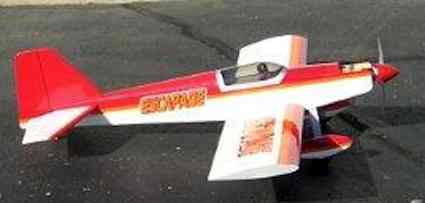 Willie's Escapade
Willie's Escapade
